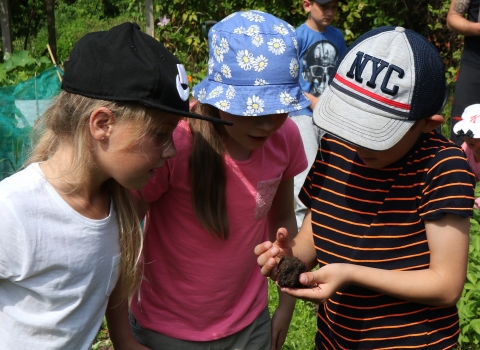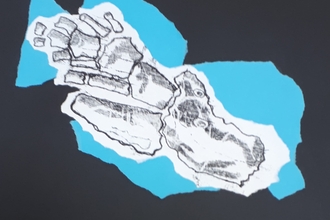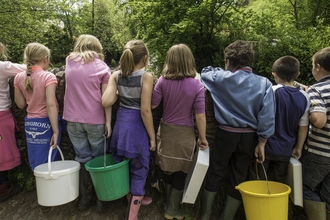We have developed an exciting range of programmes linked to the new curriculum. All are designed to inspire learning about wildlife, plant growth and habitats through a mixture of enquiry-led learning, games and observation.
Our Key Stage 2 programmes are based at Lower Smite Farm where we have three large indoor classrooms and a variety of wildlife habitats including woodland, meadows and ponds.
To book a visit email learning@worcestershirewildlifetrust.org or call 01905 754919.
If you have specific needs, please give us a call to discuss how we can tailor make a programme for your class.
The children absolutely loved the trip - The content was pitched just right for Year 3 Science. We would highly recommend your trips and look forward to visiting again soon!St Kenelms School
Our Key Stage 2 programmes
Rocks & Soils Investigation Unit
Meet Lithic Liz, a geologist on top secret missions who needs your class' help!
- Find and classify a set of rocks that are being hunted down by robbers!
- Discover about the different types of rocks and make your own using sweets.
- Investigate how soil is made and dig down into the earth using soil augurs to find out what soil we have on the farm.
Lower Smite Farm, September - May.
Keep the learning going after your trip by hiring one of our fossil kits. Use our earthenware clay moulds with your pupils to look at how fossils are made. A guidance video by local artist, Maggie Hobbs, shows you how to use them. Get stuck in and make your own trilobite, ammonite and dinosaur poo fossils! Its only £25 to hire the kit and it is loaned out for a two-week period (take a look at our fossil-making online resources for more info).
Supports:
KS2 Science: Working Scientifically, Rocks & Soils
Habitat Havens
Explore what classification is, how it works and what body parts can help us identify different invertebrates:
- Work in teams to identify a mystery pond invertebrate. Use dichotomous keys to correctly classify the creature using its body parts. Teams must keep their answers a secret! Pupils will then dress up as their team’s mystery creature and pair up with other groups to try and classify the giant invertebrate in front of them.
- Head out to investigate a freshwater habitat by pond dipping and classify species using your new found knowledge and our dichotomous keys.
- Investigate a woodland and meadow habitat to find out what is living there and why. How is it different to the pond?
- Finish up looking at the minibeasts you have found under our big screen microscope! How are they adapted?
Lower Smite Farm, March - September
Supports:
KS2 Science: Working Scientifically, All Living Things, Animals including Humans, Living Things & Their Habitats
Plant Power!
A day investigating what plants require in order to survive and how the different parts of the plant help them to do this.
- Discover how healthy soil is an important requirement of plants for life and how soil conditioner (compost) helps create a healthy soil.
- Build soil structure from LEGO to see how compost helps roots to find water and nutrients.
- Find out if compost is helping our veggie beds grow healthy plants, by testing the soil structure.
- After lunch, learn about the parts of a flower and how they help the plant to make seeds. Dissect a flower and look at the parts up close under our big screen microscope. Then head out to play our pollination game and discover what flowers are best to encourage pollinators.
Lower Smite Farm, April - September
Supports:
YR3 Plants, Design and Technology



